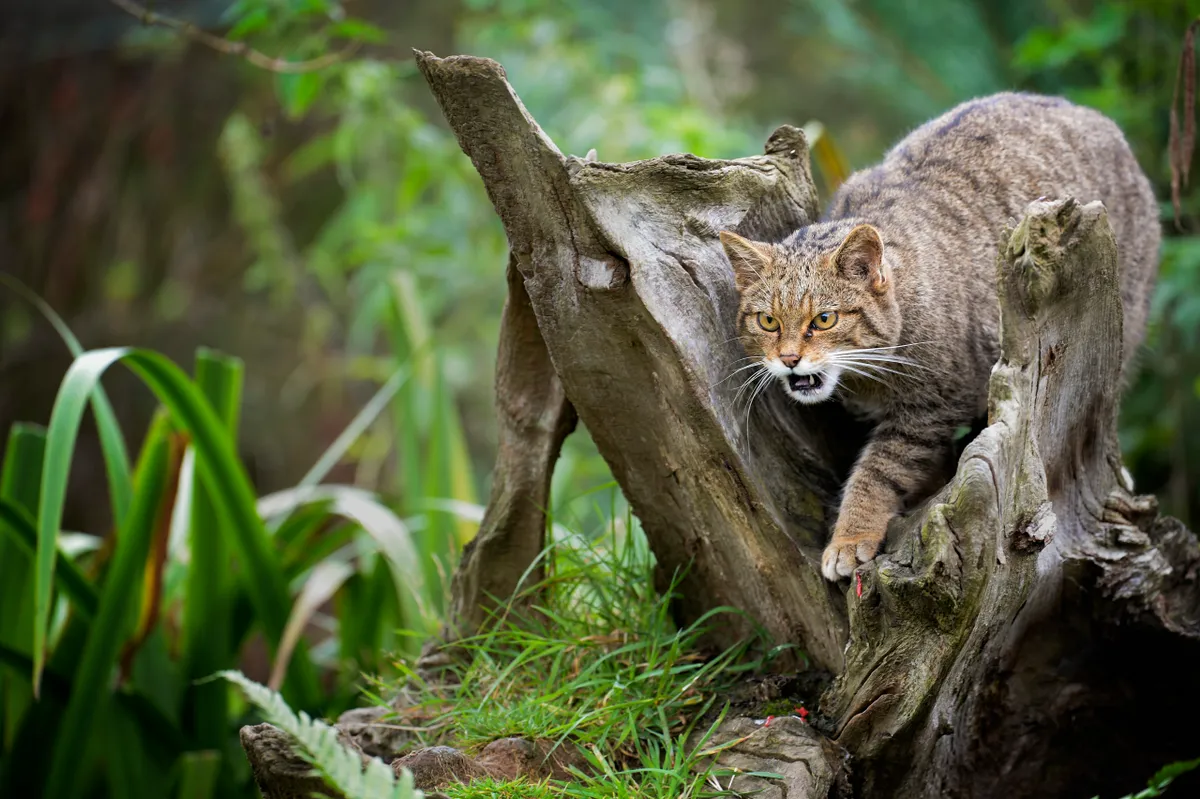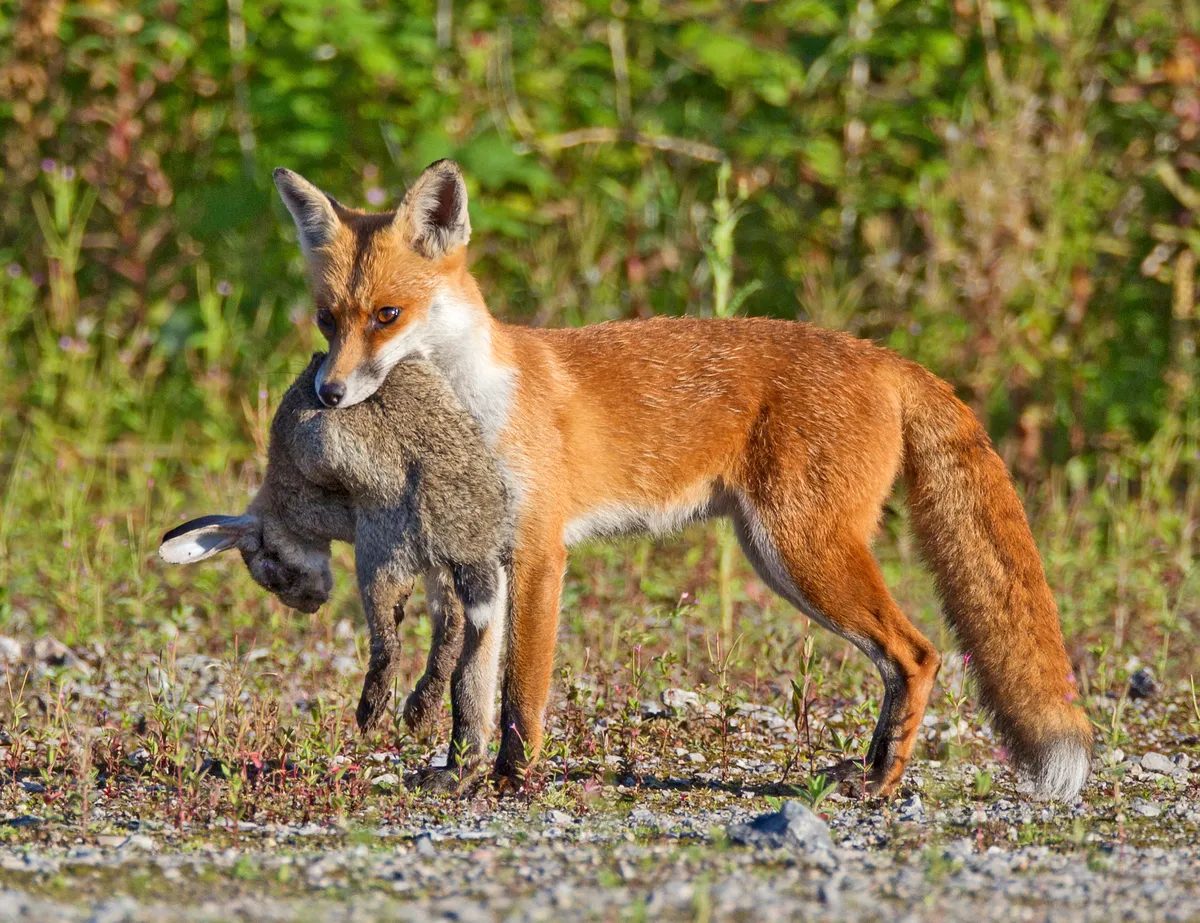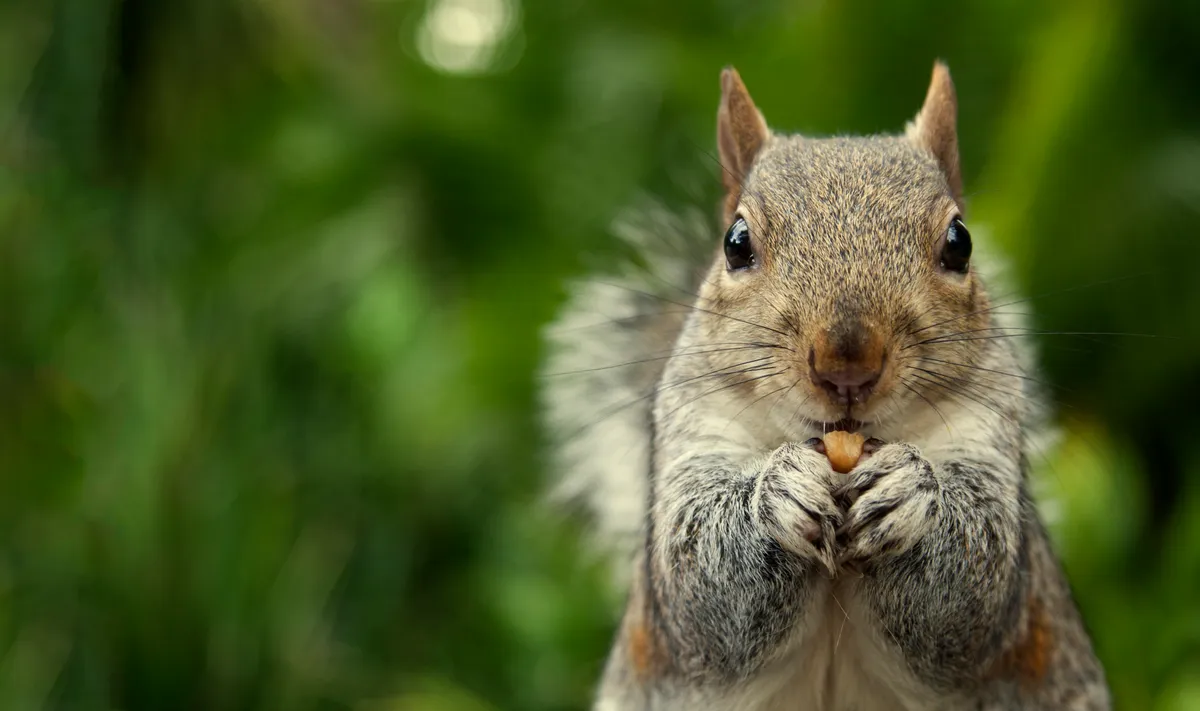Animals such as foxes cache surplus food throughout the year, but many species – especially those that feed on nuts – lay down winter stores during autumn.
These can be buried, stored in nests or even pressed into the bark of trees.
There are some surprises. Moles store living earthworms, immobilised by having their heads bitten off, for the winter. Any worms not eaten during winter crawl away when the weather warms up in spring, having grown a new head segment.
ANIMAL FOOD CACHES YOU MIGHT FIND
Cat food stores
- Wildcats and feral cats bury small prey, such as birds, covering them in loose vegetation.
- Wildcats will cache larger prey, such as rabbits, in trees.

Mole food stores
- Moles cache worms in autumn and winter before the ground becomes frozen; earthworms are often found in ‘knots’.
- The large earthworm Lumbricus terrestris is particularly favoured – moles immobilise them by biting off their head segments.
- Cached worms often found in large, above-ground mounds called ‘fortresses’ – these are most common in areas that flood in winter.
- Caches are also found in special chambers near nests and in the walls of tunnels.
- Shrews will also store earthworms, and other food, usually in their nests.
Fox food stores
- Fox caches serve as a temporary (often only a night or two) store of surplus prey.
- Food that will last a long time, such as eggs or bones, is cached most frequently.
- They are often very shallow, so the feet or wings of prey stick out of the ground.
- In urban areas, freshly dug flowerbeds or flowerpots are particularly favoured sites.
- Caches are often dug up by hedgehogs or badgers, neither of which cache food themselves.
- Foxes and mink also cache food in dens.

Wood mouse food stores
- Wood mice store seeds and nuts in their underground nests, in old birds’ nests in hedgerows and in bird, bat or dormouse boxes.
- They ‘scatterhoard’ seeds in ones and twos in shallow holes and will cache larger quantities in underground drainage pipes, causing blockages.
- Harvest mice build small winter nests in dense vegetation, with a seed store near the nest.
Squirrel food stores
- Grey squirrels also scatterhoard – nuts are buried in ones and twos in pits 2-5cm deep.
- Several caches are often located close together – they may be forgotten and germinate in spring, or be dug up by mice.
- Red and grey squirrels can sometimes store acorns or hazelnuts in tree hollows known as ‘acorn larders’.
- Jays also scatterhoard acorns and beechmast, though often considerable distances from the nearest tree; squirrels scatterhoard close to trees.
- Red squirrels store fungi wedged in branches; once dry, they can last through winter.

